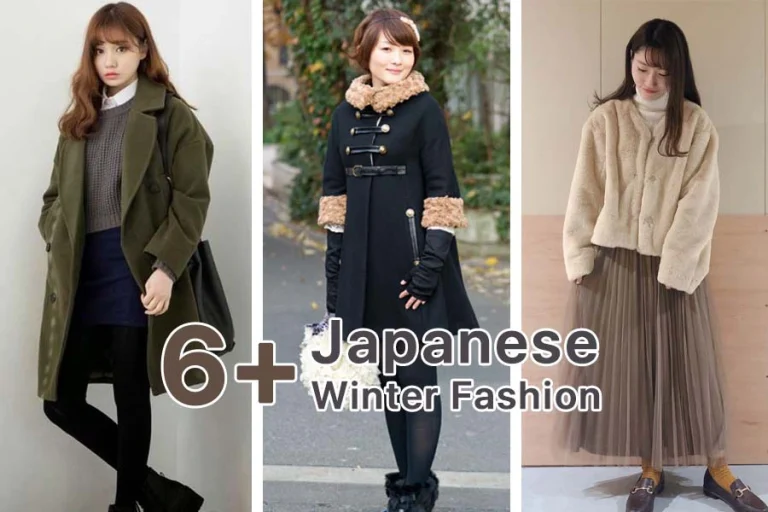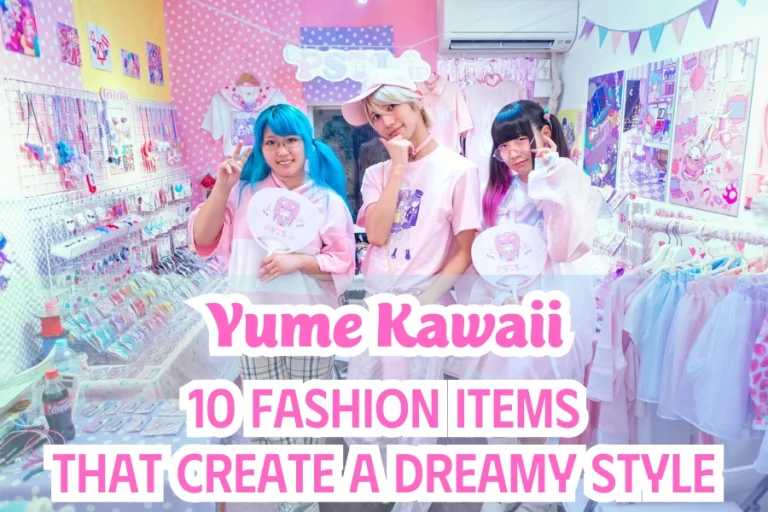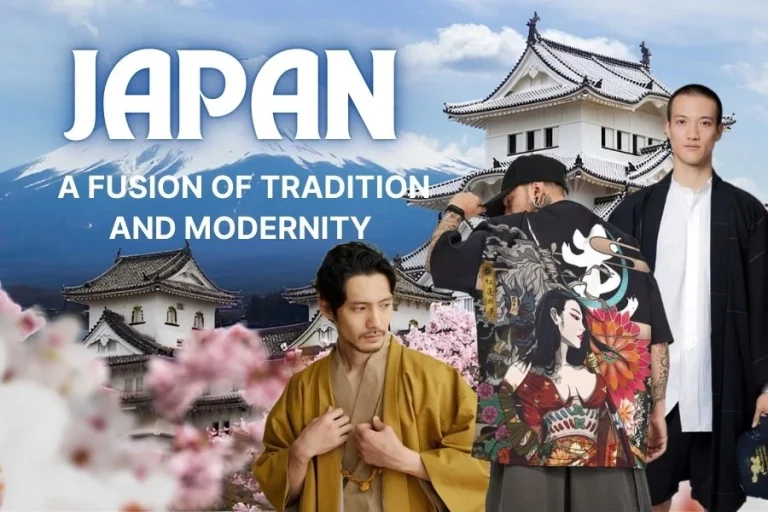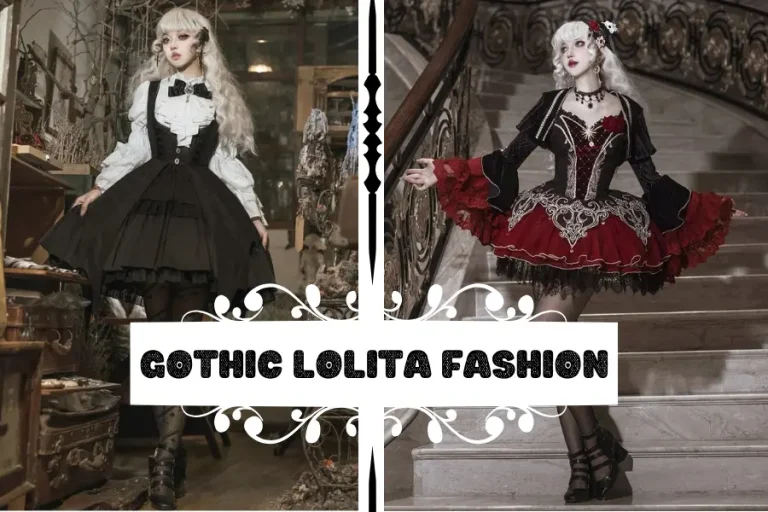The 80s Japanese fashion was a period of explosive creativity and unique styles. This period saw the fusion of tradition and modernity, of Eastern and Western cultures. We explore this fashion wave from a historical and social perspective, helping you understand why Japanese trends are still so relevant today.
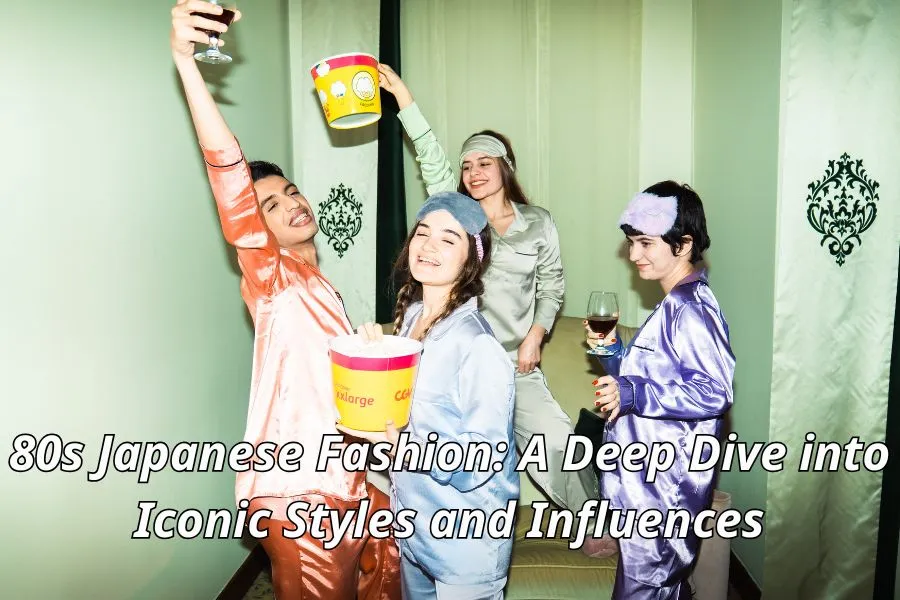
The Cultural and Social Influences of 80s Japanese Fashion
Japanese fashion in the 1980s was deeply influenced by many cultural and social factors. This transformation took place on many fronts.
The Japanese lifestyle changed significantly during this period. In a collectivist society, Japanese youth began to seek personal identity through clothing. According to statistics from the Tokyo Fashion Research Institute, more than 65% of Japanese youth during this period considered fashion as a way to express their personality.
The Japanese fashion industry grew rapidly, with sales doubling between 1980 and 1989. Shopping malls and fashion stores sprung up across Tokyo, Osaka, and major cities. The Harajuku and Shibuya areas in Tokyo became the epicenter of new trends.
Factors influencing Japanese fashion in the 1980s included:
- Fashion magazines that set trends for young people
- Movies and television shows that introduced new styles
- J-pop and rock music with iconic artists
- Western culture from the US and Europe that was adopted and transformed in its own way
The Most Iconic Japanese Fashion Trends of the 80s
The 80s witnessed the birth of many typical fashion styles in Japan. Each trend carries with it a story about the culture and society of that period.
Hamatora (Early ’80s) – The Mix of Traditional & Western Elements
The Hamatora style emerged in the early 1980s and quickly became a symbol of Japanese students. The name comes from “Yokohama Traditional” – a combination of traditional and modern elements.
The Hamatora outfit usually includes a white shirt, khaki pants or pleated skirt, blazer, and tie. Loafers and high socks are also indispensable accessories. The main colors are usually navy, white, and beige – creating a neat, elegant feeling.
Typical brands of this style include VAN Jacket, Kent, and Ship, with products designed specifically for the school market. According to 1982 market research, more than 40% of high school and university students in Tokyo follow this style.
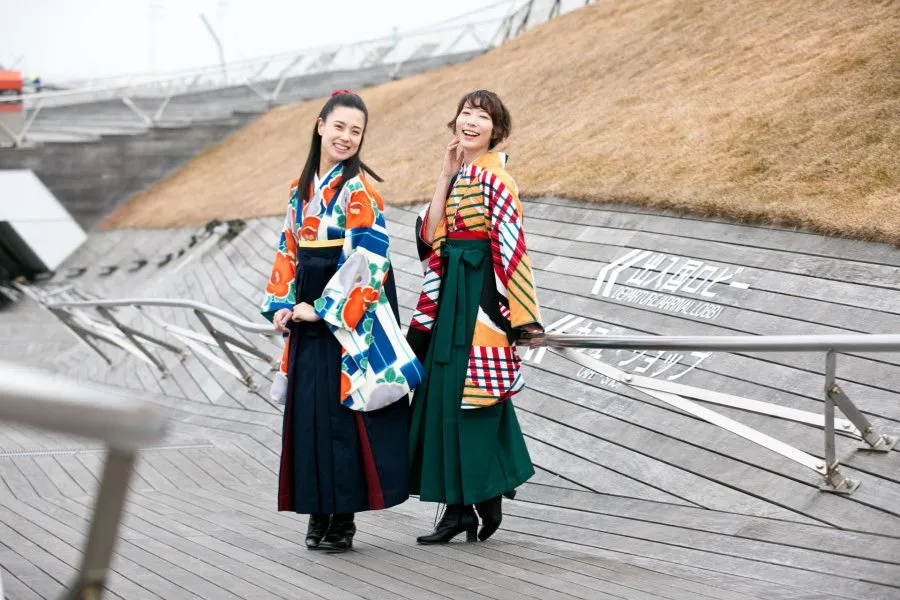
Japanese Preppy (1981) – The Birth of a Classic Style
The Japanese Preppy style emerged in 1981, strongly influenced by the American Ivy League style. This style pursues a sophisticated, luxurious yet youthful look.
Typical outfits include polo shirts, khaki pants, tweed jackets, cashmere sweaters, and loafers. Colors are often soft pastel tones or classic colors such as navy, burgundy, and hunter green. The Japanese Preppy style is popular among urban youth, especially the “party” groups of Roppongi and Aoyama.
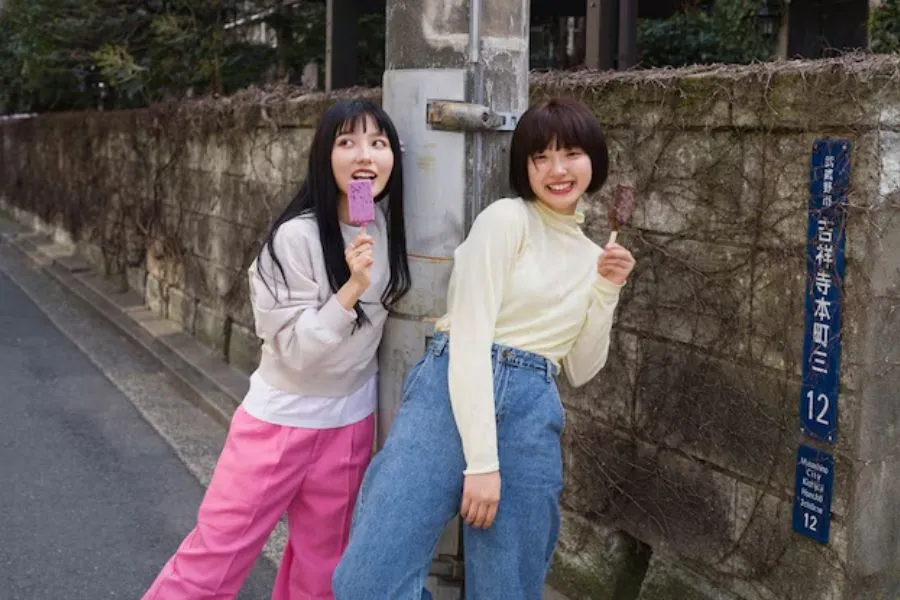
Karasu-Zoku (1982) – The All-Black Aesthetic
The crow group is the most influential style that first manifested itself in 1982, marking a watershed in the development of Japanese avant-garde fashion. This style is most famous for its use of black from head to toe.
Karasu-Zoku is characterized by materials that are light and not heavy in feel. Bold use of asymmetry with oversized silhouettes; iridescent, rich textures worked into the intuitively constructed ensemble. It’s often with emphasis placed on oblique or irregular cuts. The designs create a sense of freshness and of being quite avant-garde.
Yohji Yamamoto and Rei Kawakubo (Comme des Garçons) are the foremost designers under the Crow group. Kawakubo’s 1982 “Hiroshima Chic” collection shocked the fashion world with its torn, unfinished, but highly artistic designs.
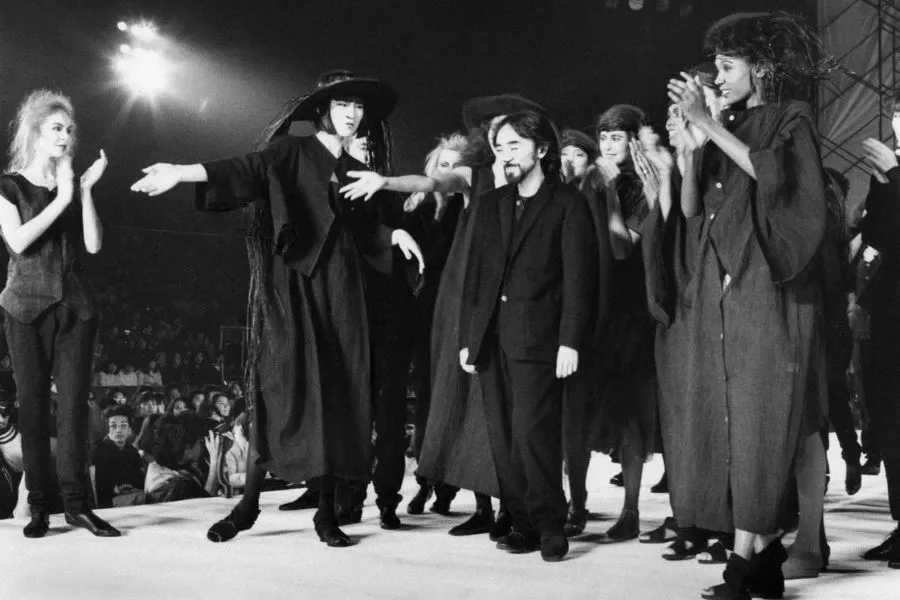
Olive Girls (1984) – The Feminine Yet Bold Look
The Olive Girls’ style was born in 1984, named after the famous Olive magazine. This style aims for feminine, romantic beauty with influences from French fashion.
Typical Olive Girls outfits include a midi-length skirt, a Peter Pan collar blouse, an oversized cardigan, and flat shoes. Small floral patterns, stripes, and polka dots are popular. Colors are usually soft pastels or warm earth tones.
Olive magazine peaked at 500,000 copies per month in 1987. This style is popular with high school and university girls, with about 30% of women aged 15-25 in Tokyo following it.
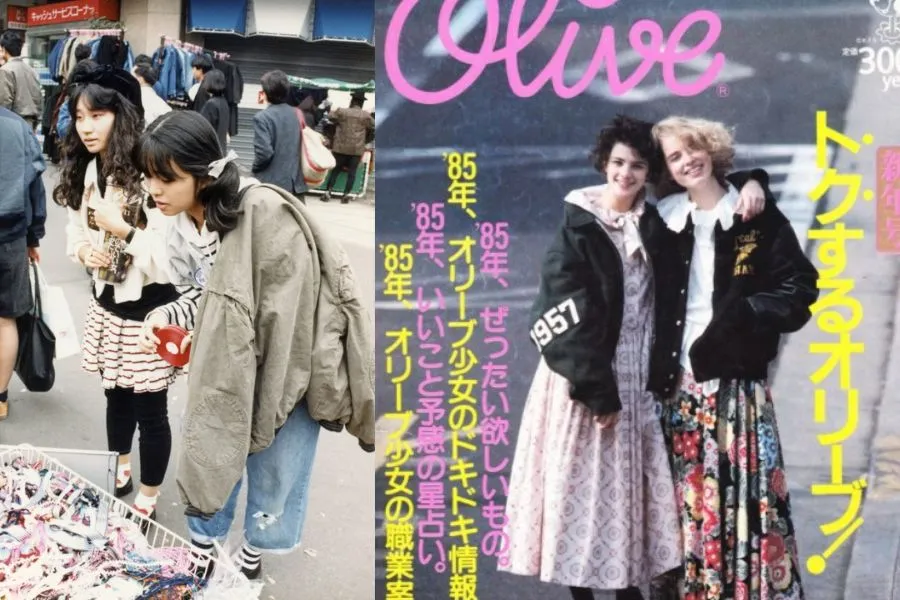
One-Length & Body Conscious (1987) – The Evolution of Silhouettes
1987 saw the rise of the One-Length hairstyle and the Body Conscious (Bodycon) in Japan. This trend marked a shift from loose, wide styles to tight, figure-hugging lines.
The One-Length hairstyle – hair cut straight at one length – became a symbol of modern women. Bodycon outfits with tight skirts, leggings, and crop tops showed off the curves of the body.
The Western brands Alaia and Hervé Léger were major influences on this trend. In Japan, designer Mitsuhiro Matsuda and the brand Bigi were pioneers.
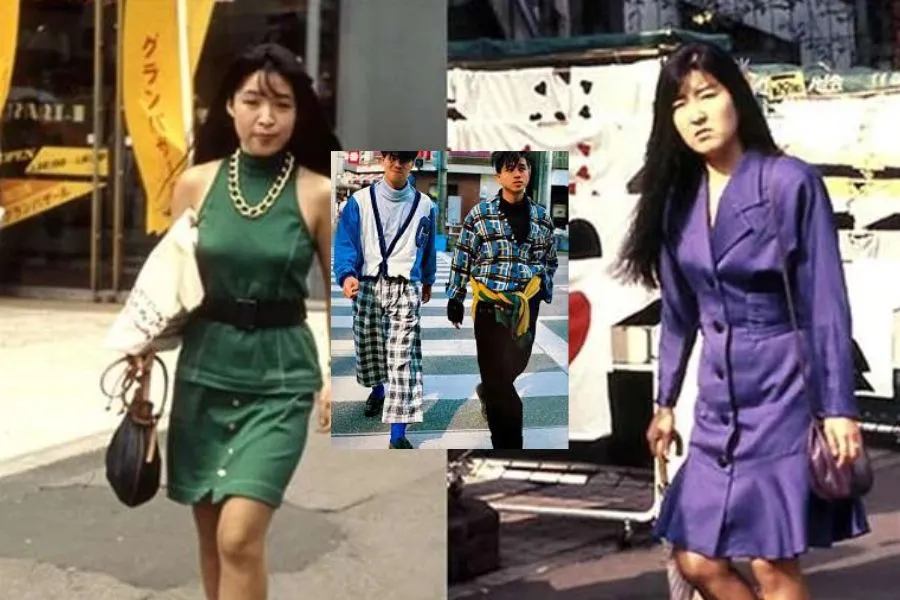
Shibukaji (1988) – The Birth of Casual Street Fashion
Shibukaji (short for “Shibuya Casual”) emerged in 1988 in the Shibuya area of Tokyo. It is the forerunner of modern Japanese streetwear.
The Shibukaji look is characterized by wide-leg jeans, graphic tees, bomber jackets and sneakers. The style incorporates elements from American street culture but is refined to a Japanese aesthetic – refined and focused on detail.
Brands such as A Bathing Ape, Neighborhood, and Wtaps emerged during this period and have since become major names in the global streetwear scene.
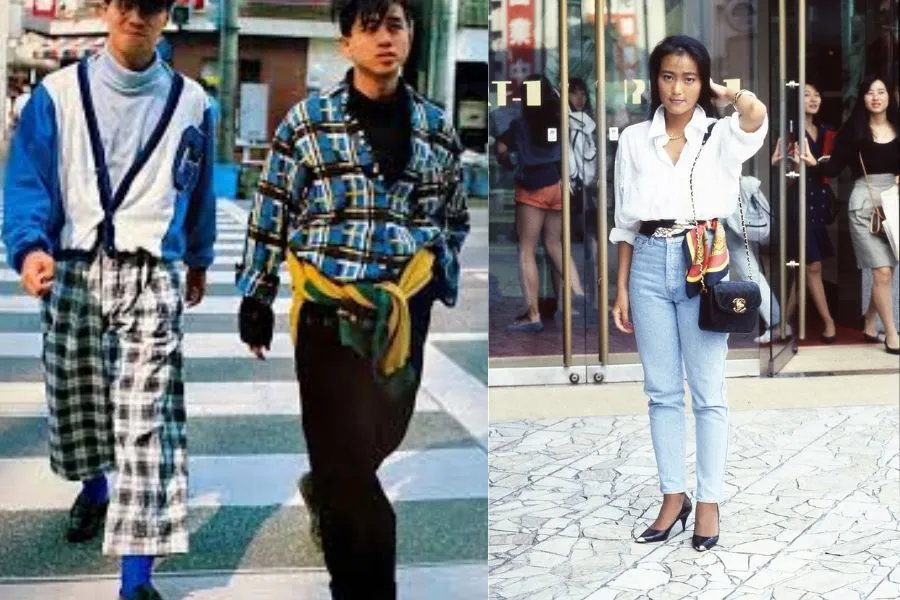
The Impact of 80s Japanese Fashion on Modern Trends
80s Japanese fashion has had a profound influence on modern trends. Many elements from this period are still seen on the runways and streets today.
- Yohji Yamamoto and Comme des Garçons’ oversized styles inspired the modern wave of “deconstructed” and “anti-fashion”. Contemporary designers like Demna Gvasalia (Balenciaga) and Virgil Abloh (Off-White) have acknowledged the influence of the 80s Japanese avant-garde.
- Vintage and retro trends are making a strong comeback. According to a 2024 report from Vogue Business, searches for “80s Japanese fashion” increased 230% compared to the previous year. Platforms like Instagram and TikTok have recorded millions of posts with the hashtag #80sJapaneseFashion.
- Harajuku street fashion today still maintains the experimental and unconventional spirit of the 80s. Styles such as Mori Girl, Lolita, and Visual Kei all have their roots in trends from this period.
Where Tradition Meets Edge: KamiCrew’s Take on Retro 80s Japanese Fashion
KamiCrew is a Japan-inspired fashion brand that blends traditional culture with modern style. Our designs feature bold contrasts, clean lines, and striking visuals. We’re creating pieces that are as unique and stylish as the stories behind them.
Beyond everyday essentials, KamiCrew curates unique collections that celebrate different facets of Japanese culture and street fashion. From limited-edition graphic tees inspired by iconic ukiyo-e prints, to hoodies that pay homage to Tokyo’s neon nightlife, and sweatshirts featuring playful mascots and seasonal motifs.
Each collection is designed to mix and match effortlessly, so you can create bold, expressive looks that reflect your personal style.
Don’t miss out — enjoy up to 20% off plus free shipping for a limited time and make your next outfit unforgettable with KamiCrew!
Wrap up
80s Japanese fashion marked a period of constant creativity and innovation. The unique combination of Western and Eastern elements, of tradition and modernity, created a unique identity for Japanese fashion. This spirit continues to influence the global fashion industry to this day.
